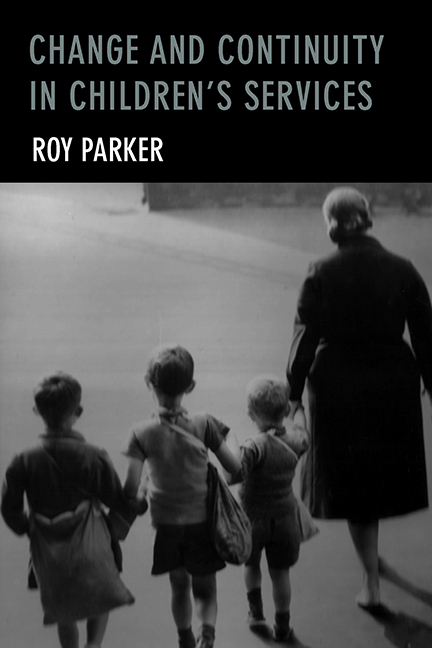Book contents
- Frontmatter
- Dedication
- Cover illustration
- Contents
- Acknowledgements
- Preface
- 1 Introduction: patterns of change and continuity
- 2 Residential child care: an historical perspective
- 3 From boarding-out to foster care
- 4 The evolution of landmark legislation
- 5 Getting started with the Children Act 1948: what do we learn?
- 6 Child care in the melting pot in the 1980s
- 7 Trends, transitions and tensions: children’s services since 101 the 1980s
- 8 Reflections on the assessment of outcomes in child care
- 9 The role and function of inquiries
- 10 Evidence, judgement, values and engagement
- 11 Emerging issues: looking ahead
- Notes and references
- Bibliography
- Index
8 - Reflections on the assessment of outcomes in child care
Published online by Cambridge University Press: 07 March 2022
- Frontmatter
- Dedication
- Cover illustration
- Contents
- Acknowledgements
- Preface
- 1 Introduction: patterns of change and continuity
- 2 Residential child care: an historical perspective
- 3 From boarding-out to foster care
- 4 The evolution of landmark legislation
- 5 Getting started with the Children Act 1948: what do we learn?
- 6 Child care in the melting pot in the 1980s
- 7 Trends, transitions and tensions: children’s services since 101 the 1980s
- 8 Reflections on the assessment of outcomes in child care
- 9 The role and function of inquiries
- 10 Evidence, judgement, values and engagement
- 11 Emerging issues: looking ahead
- Notes and references
- Bibliography
- Index
Summary
The Department of Health working party that I chaired, and whose report Assessing Outcomes in Child Care appeared in 1991, led to the ‘Looking After Children’ scheme. This provided a means of assessing the outcomes for children who were, or had been, in local authority care. Since then I have reflected upon some of the issues with which we grappled and upon others that emerged later. Although significant progress has been made in monitoring outcomes tantalising questions remain.
I The stability of outcomes over time
Taxing problems surround deciding when an outcome should be assessed. At certain times there may be a temporary improvement or an uncharacteristic deterioration. What we observe may be an enduring condition, but it may also be no more than a transitional stage. If the latter there could be subsequent reversals, further advances or eventual stabilisation. A few examples will illustrate how careful one needs to be in deciding just when a course of events has reached the point of being appropriately regarded as an outcome.
A report on Jewish children saved from the concentration camps and brought to Britain in 1945 described their profoundly disturbed emotional state but also the apparently miraculous rate of their psychological recovery. However, as time passed this recovery often failed to be sustained, although exactly when the setbacks occurred and how serious or lasting they were was found to be hard to predict; and no long-term follow-up was undertaken. Other studies, such as that of Cornish and Clarke, also drew attention to the fact that although disturbing behaviour could be modified while youngsters remained in controlled residential settings the changes did not usually survive once they left and the control disappeared. Likewise, Bartak and Rutter showed what progress could be made with autistic children given favourable staff ratios and a well-controlled classroom; but they also noted how difficult it was to maintain the educational improvements when the children returned home unless there was good collaboration between parents and school.
- Type
- Chapter
- Information
- Change and Continuity in Children's Services , pp. 117 - 126Publisher: Bristol University PressPrint publication year: 2015



